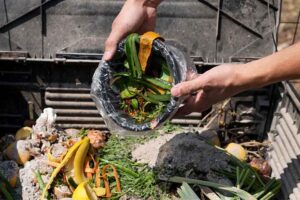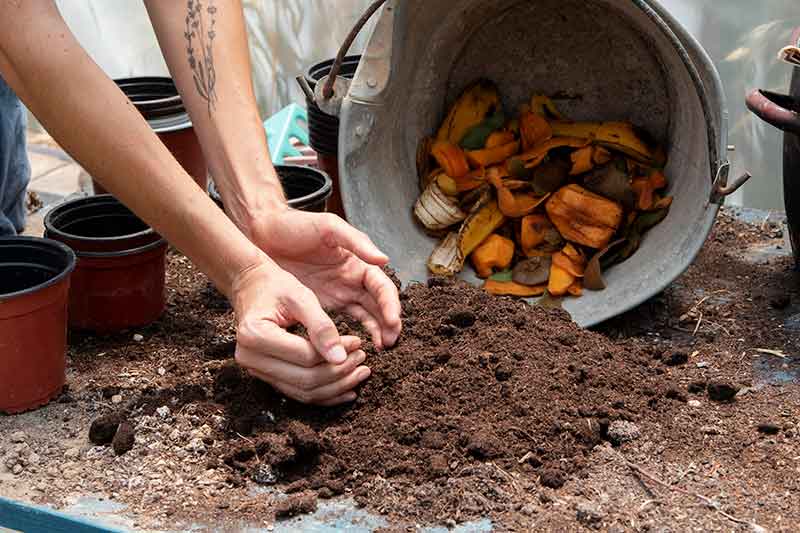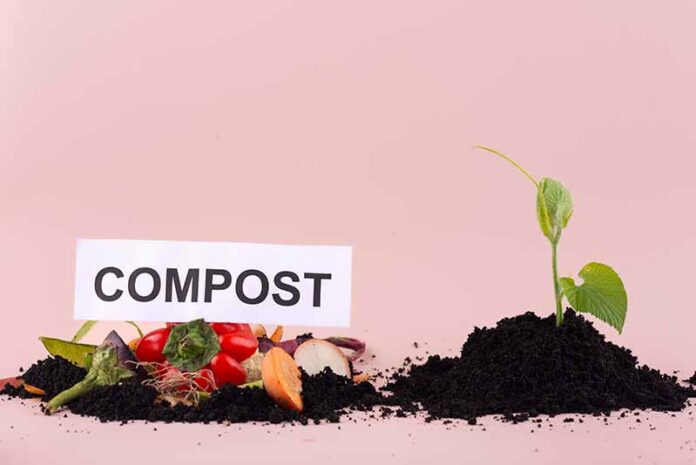Namaskar Desi Gardeners. We all know about Composting of Waste, right? It is the next most important potting ingredient after soil. Plants love compost, it is their food and comfort.
When we think of compost, we usually think of some kind of manure. While that is true, there is a lot more to it. There are various types of compost. It can be prepared by different methods. Sometimes a particular type of compost is required by a particular plant. For example, plants like azalea thrive mostly in leaf-compost. Mushroom growing needs a special kind of composting and potting media that has to be sterile.
Various Ways and Process of Composting
Basically, Process of Composting includes the plant food that has been prepared by decomposition. You see, we gather our kitchen waste like vegetable peels, tea leaves etc. to provide nutrients to the plant is the Definition of Composting. But if we give it directly, it becomes a problem to them. Firstly, various kinds of insects gather to eat and decompose the waste. This can affect the health of the plant. Decomposition also releases heat and at a point the acids are released which can harm the roots.

When the waste gathers on Mother Earth, she balances the heat, insects, and soil pH. She converts these beautifully into compost and gives fertility to the soil. But when we have to do it ourselves, we have keep in mind to make the compost separately with the right temperature, moisture, oxygen and organic materials – and then apply it to our plants.
Composts can be ‘green’ or ‘brown’. Green compost means that it is especially rich in nitrogen based nutrients. Brown compost is rich in carbon and organic matter.
Broadly speaking, these are some Composting Waste types.
Open air / aerobic Composting Waste
Aerobic Composting Waste is one of the most common types. Collecting a bin full of dried leaves, twigs, wood chips, weeds, and then leaving it in the open to decompose is very commonly done by gardeners. Or use a compost tumbler and make use of fresh air to speed the process. A little moisture is added which helps to speed up the process of the bacteria breaking down the organic matter.
Open air or aerobic compost making is relatively quick and you can get the manure ready within two months. This process does not stink so much as other methods. It is also eco-friendly and an easy way to reuse organic waste. That way it will also give you free fertilizer and reduce your costs.
In-ground / inaerobic Composting of Waste
The most common way of inaerobic Composting of Waste is to dig a hole, and bury it with your kitchen waste, grass clippings and other organic waste. This method has been used for thousands of years.
In-ground composting does not use air, that is, it uses the anaerobic bacteria to break it down. While the result of the composting is very good, it can take a long time, depending upon what you put it. Along with that it gives out odor and methane gas is released, which is not so good.
Still in-ground composting is the most common type used by farmers.
Vermicomposting method
Vermicompost is the most loved compost of gardeners. It is called the ‘black gold’. Vermicomposting uses earthworms to break down the organic matter. We all know that earthworms are the gardener’s best friend. These make the soil porous, more fertile and help the plants in growing well.

What makes a good compost?
Balance of nutrients
The manure should have various kinds of organic matter. Unless it is prepared for a specific plant type, the balanced amount of N, P and K is very necessary. The macronutrients and micronutrients both are needed by the plant at different stages of its life cycle. As an example, too many citrus peels will make the manure more acidic. While a hibiscus or rose will love it, it may not go well for other plants, like the lavender.
Should be decomposed fully.
If the compost is not fully prepared it will stink and attract insects. Good quality compost usually has no odor. Compost that is not ready will affect your plants and even kill. Pests will be attracted to this manure and will create more trouble in your garden.
Neutral pH
Ideally compost should have a pH range between 6 and 8. It should be neutral.
Although some sold in the market are slightly acidic, with a pH less than 6. Composts like this are not ready to be used for the plants. We have an idea that adding compost makes the soil more ‘acidic’. This is logically not possible and needs to be scientifically checked with a pH meter for the garden. Here is one you can get for your garden. The truth is, compost is neutral and when added to the soil, it shifts the pH more to the neutral side.
Compost types that we apply in our Indian gardens and farms
We easily get various types of compost in the nurseries in India. Here are some of the most common ones-
Cow dung compost
Remember that you should not apply cow dung with composting it first. Even cow dung cakes should be dried and processed before use. When we use it directly, firstly it takes time to break down the nutrients and during this time it attracts a lot of insects that can harm your plants. However if you have big trees, then you may dig the soil and apply uncomposted or semi-composted cow dung or cake.
The correct way to apply cow dung compost is to age it for at least two years under the sun or put it in a composter. The cow dung compost sold in the market can be mixed with the soil and applied as a dry fertilizer. The best way is to make a liquid fertilizer out of it. Soak about 50 gms of cow dung compost in one liter of water for four days. Dilute this mixture with ten litres of water and apply this water to your soil instead of plain watering. This is an inexpensive and excellent all-round fertilizer.

Mustard cake fertilizer and compost
Mustard cake is the fiber that remains after the oil has been extracted. Remember that this is not the same as the mustard seeds/powder we use for cooking. The mustard cake is dried and composted, and then it becomes ready to be applied.
Just like cow dung, mustard cake compost can be applied as a dry fertilizer or prepared as a liquid one.
Composting of Waste
The compost sold in the market is an organic composition of composting different crops, vegetables and fruits, wooden twigs and chips, animal faeces, cow dung, leaves etc. It can vary from seller to seller and can be prepared in an aerobic or inaerobic way. It is one of the most important ingredient of the potting soil. You can also make compost tea to apply as a fertilizer to your plants.
Vermicompost
When the compost is especially prepared with the help of earthworms, it is sold as vermicompost. The ‘black gold’ is very much preferred by gardeners.
‘Vermicompost tea’ is also a useful liquid fertilizer.
Leaf compost
Especially made with dried leaves only. This compost is needed for plants like azalea, camellia, rhododendron, succulents and various cacti. Most of the organic fertilizers that we get are prepared by some kind of composting. We have groundnut cake powder that is the fiber left after extraction of the groundnut oil. It is then composted and made into a fertilizer. At home, we make banana peels compost, tea compost and such to apply to our plants.
The point of composting is to protect the plants from the heat and acids that the composting gives off. with that there is also the odor. You will also want to keep your garden clean and free off insects. When we apply the ready made compost, the food is ready to taken up by the plants easily and used for its growth and flowering.
View this post on Instagram
| You May Also Be Interested in Other Topics- | |
| 1. | Beautiful Blue Flowers |
| 2. | Coco Peat for Plant |
| 3. | Amaryllis Flowers |





























